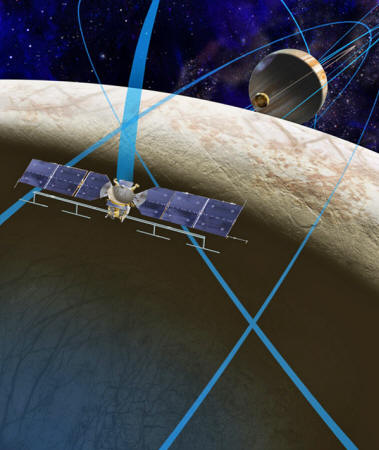|
from
Space Website
which the agency aims
to launch in the 2020s.
The chief goal of this first meeting was to start refining the mission's planned science operations, with a particular emphasis on how its nine instruments will work together to investigate Europa's habitability, agency officials said.
NASA aims to launch the as-yet-unnamed Europa mission, which will likely cost about $2 billion, in the early to mid-2020s.
The spacecraft would reach Jupiter in about eight years if launched on currently available rockets, and in less than three years if lofted by NASA's in-development Space Launch System megarocket, NASA officials have said.
Once in orbit around Jupiter, the robotic spacecraft will perform about 45 flybys of the 1,900-mile-wide (3,100 kilometers) Europa, which is believed to contain a sea of liquid water (below video) beneath its icy shell, over the course of about two and a half years.
The Europa probe's supersharp cameras, heat detector, ice-penetrating radar and other instruments will shed light on the Jovian moon's surface composition and the nature of its subsurface ocean, among other things, NASA officials have said.
The Europa probe won't actively search for signs of life.
NASA officials have said they'd like to mount a life-detection mission to the Jupiter moon in the future - perhaps one that gets under the ice shell and samples the ocean directly.
|


